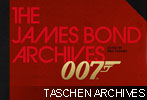Bond Bibles - Sally Hibbin
8th June 2021
Meet some of the most knowledgeable 007 authors and experts, starting with Sally Hibbin
Ever since Ian Fleming wrote Casino Royale many authors and journalists have explored and celebrated the James Bond phenomenon. While some books have been official, large format publications, others have delved deeper into specific areas of the subject. In this new series Matthew Field will meet both high-profile writers as well as some of the world’s most knowledgeable “007” experts, who have contributed to the James Bond bibliography.

Sally Hibbin – 03 July 1953
Bond Bibles:
- The Official James Bond 007 Movie Book
- The Official James Bond 007 Movie Poster Book
- The New Official James Bond 007 Movie Book
- The Making of Licence To Kill
Sally Hibbin at Bond in Motion, photographed by Mark Witherspoon. All rights reserved.
In 1987 I was six years old. Following minor surgery, I awoke to discover a gift at the foot of my hospital bed: Sally Hibbin’s The Official James Bond 007 Movie Poster Book. I read it from cover to cover and even digested the copyright notice. It seems appropriate that the author of my first “Bond bible” should be the first subject of this new series.
Sally Hibbin was commissioned between 1987 and 1989 by Hamlyn to write three Bond titles, the aforementioned Poster Book as well as The Official James Bond 007 Movie Book and The Making of Licence To Kill. She also wrote licenced books on the ‘Carry On’ series, Disney and the ‘Back to The Future’ trilogy. Hibbin’s post Bond career is even more fascinating. She went on to produce 20 feature films – five with the critically acclaimed filmmaker Ken Loach. The 1988 TV drama, ‘A Very British Coup’ won Hibbin a BAFTA. Now retired, she lives in Harwich, Essex with her two leopard cats and her beloved classic car, an original black Mini.
Matthew Field's Bond Bibles
Pre-COVID, I sat down with Sally, to discuss how she became the first “official” author to write a book about the James Bond films.
Sally, thank-you for being the first James Bond author to kick this new ‘Bond Bibles’ series off with…
Not at all! Firstly, can I say, I’m really enjoying yours and Ajay’s book. It never occurred to me that Harry Saltzman was part of Woodfall – it was an absolute revelation.
Thank-you! It’s interesting you say that, as Saltzman’s son, Steven, points out that ‘From Russia With Love’ was Harry’s favourite Bond movie – the grittiest of the nine pictures he was involved with – and probably closest in style to the tone of his other movies like ‘The Ipcress File’ and the realism of his Woodfall productions. You wrote your James Bond books over 30 years ago, has anyone ever asked you about your association with 007 since then?
Not really. I was at the Berlin Film Festival waiting for our evening screening of ‘Ladybird, Ladybird’ (1991) – one of the movies I produced with Ken Loach and this person said, “Are you Sally Hibbin? I’m the president of the German James Bond Fan Club. And I want to tell you about all the mistakes in your book!” [Laughs].
We probably know him! The Official James Bond 007 Movie Book was published in 1987 and marked the 25th anniversary of the film series. Were you surprised it took so long for EON to endorse a licenced book on the franchise?
It did occur to me afterwards but in a way the Bond films didn’t need that level of publicity.
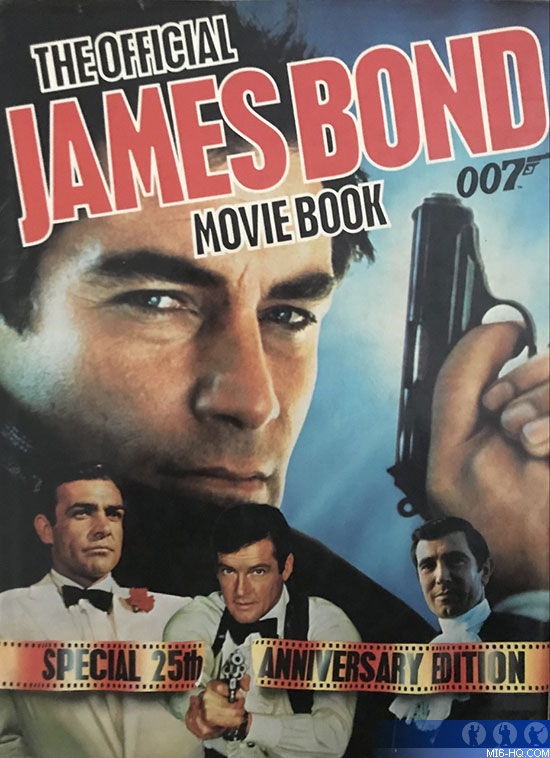
By 1987, you were already a filmmaker in your own right, having made campaign films for the Greater London Council and the CND. How did your involvement with Bond begin?
I was but let me start at the beginning. One of the first jobs I got when I left University was on a magazine called The Movie, which built into an encyclopaedia of weekly parts. I got a job as a researcher because my mum was a film critic and I knew a lot about films. I worked for The Movie for many years while I explored the possibility of making films. A few years later I was trying to get ‘A Very British Coup’ off the ground as a film and it just wasn’t working. I was broke. My editor at The Movie, Ann Lloyd, was now freelancing for Hamlyn and she phoned me up on my birthday in July 1986 and said, “Happy birthday! What do you think about James Bond?” I was about to say they were a pile of crap when the penny dropped and I said, “Oh…I think they are quite interesting!”. Hamlyn did a lot of licenced books and decided to do the Bond project and to do it in collaboration with EON and had hired Ann to edit the book. I went to see Hamlyn and put in a proposal as to how I might do it. We tweaked it and I got sent off to write it. It was only my second book - the first being a collection of essays from the Communist University of London titled ‘Politics, Ideology and the State,’ (Lawrence & Wishart Ltd, 1978) - probably sold 20 copies!
Your mother, Nina Hibbin, the respected film critic, slated ‘Dr. No’ in her review for The Daily Worker, calling it “vicious hokum.” She later said of ‘Goldfinger’ that, “the cult of James Bondism is a vicious one, a symptomatic sickness of the age…”
Did she? I didn’t know that! I’d love to read her reviews. She probably thought they were a pile of sexist crap. I did go to the pictures with my mother as a kid but she never took me to the Bond movies. My mother was a Communist and a feminist and outspoken, so she was bound to criticise them. Strangely, she did not criticise the Carry On series for being sexiest. I can see why she didn’t like the early Bond films such as ‘From Russia With Love’ which she would have considered very crude and anti-communist, saved only by Sean Connery’s raised eyebrow and Rosa Klebb’s spiked shoe. Although very sexist, they are fun films, not misogynist.
It’s ironic really, that the daughter of one of James Bond’s most fiercely negative critics, ended up becoming the first official author to write about the Bond movies…
[Laughs]. Yes, but mum was very proud I did the Movie Book.
So when did you finally see the Bond movies?
I saw them on TV. I actually loved ‘The Spy Who Loved Me.’ I liked Roger Moore because he was tongue in cheek. My favourite sequence is when Bond skis over the edge and pulls the parachute and out comes the Union Jack. It’s so tongue in cheek. It’s brilliant. And I love it in that movie when the woman comes into her own. I can deal with Roger Moore because he’s taking the piss out of it - although I can’t deal with the one about voodoo [‘Live And Let Die’] because, that I think, is deeply racist.
Had you read any of Ian Fleming’s novels?
I read a couple but they are not really my cup of tea and in a way I didn’t need to for my Bond books. The Bond films, in a way, their politics are better than the books. There is much more East-West co-operation in the films than there ever was in the books and I think that is very deliberate.
The Official James Bond 007 Movie Book told the history of the films in a wonderfully simple way…
Yes that was my decision.
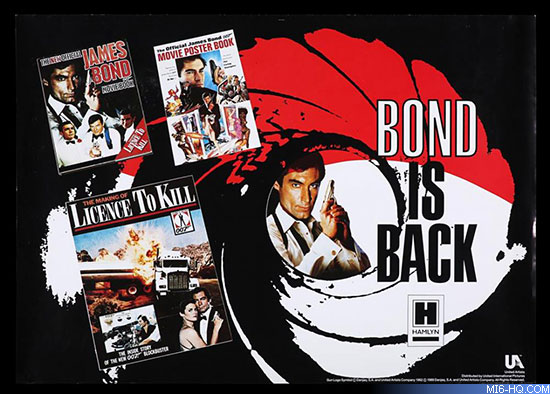
So how did The Movie Book develop?
Well it went at a rate of knots! I decided that the Bond films could be broken down into recognisable elements and we needed to pinpoint them and make it fun. I loved the format we created. I didn’t have very long to write The Movie Book only about 6 to 8 weeks - It was a very fast turnaround because they wanted it out with ‘The Living Daylights’. It really consisted of me sitting in my living room, watching Bond films and making notes and writing. I watched a film; broke it down into the elements. That worked really well. For my sins, I did read a couple of the existing James Bond books, but I found them very dry and boyish. I gathered all my notes and went off on holiday to Tenerife to finish the book.
How involved were EON Productions in the development of the book?
Jerry Juroe [publicity and marketing] oversaw it from the start and was the one to tell me when I got things wrong! I love Jerry, he’s a delightful figure. I had not seen him for 30 years but reunited with him when he launched his autobiography a couple of years ago. I didn’t meet anyone else from EON but then the nature of the book didn’t really require meeting many people. When we had a first draft, I went to see Jerry and in places I had got the emphasis wrong, I’d over emphasised one of the art directors and hadn’t written enough about the other one. There was a lot of politics that we had to correct.
Did you have experts you could call on to check facts?
SH: Only Jerry Juroe. I didn’t even know the James Bond Fan Club existed! That kind of nerdy thing – sorry if you are part of the James Bond Fan Cub – it didn’t even occur to me that people would do that.
I have written for many different James Bond fan publications Sally! [Laughs]. In fact, in preparation for this interview I went back and read relevant fanzine back issues and the British Fan Club wrote a very nice review of The Making of Licence To Kill.
Did they? Well that’s nice to hear!
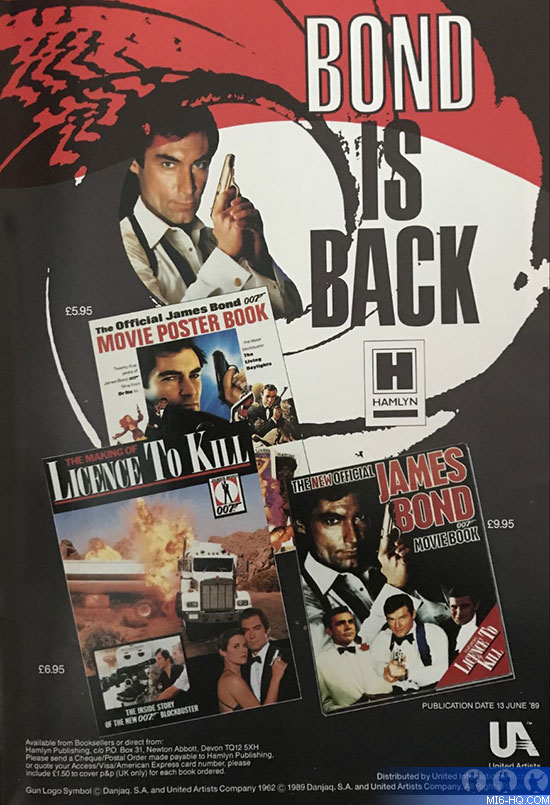
The Movie Book was a great success when published…
It went to the best sellers list – which I thought was remarkable. I didn’t get any more money! Hamlyn made a fortune.
It was also published by Crown in America…
It still didn’t get me any more money Matthew! I do have copies of it in Japanese and other languages too.
Did you participate in any publicity?
SH: Yes, I drove around the country doing local radio. I went into BBC Northern Ireland and the interviewer said; ‘How come the producer of ‘A Very British Coup’ is writing a book about the James Bond films? It seems paradoxical.
At the same time you also wrote The Official James Bond 007 Movie Poster Book…
I Iove the Poster Book! This was my idea. Hamlyn used to take me for very nice lunches and we were talking about other titles we could produce to exploit the James Bond licence. Hamlyn were good at involving me in the layout process and the choice of pictures, which I really enjoy and I remember the meeting where we selected the posters for the book. What I tried to do was commune with the posters, take apart the elements and explain how they fitted into the plot. I sat there for a couple of hours and studied each poster.
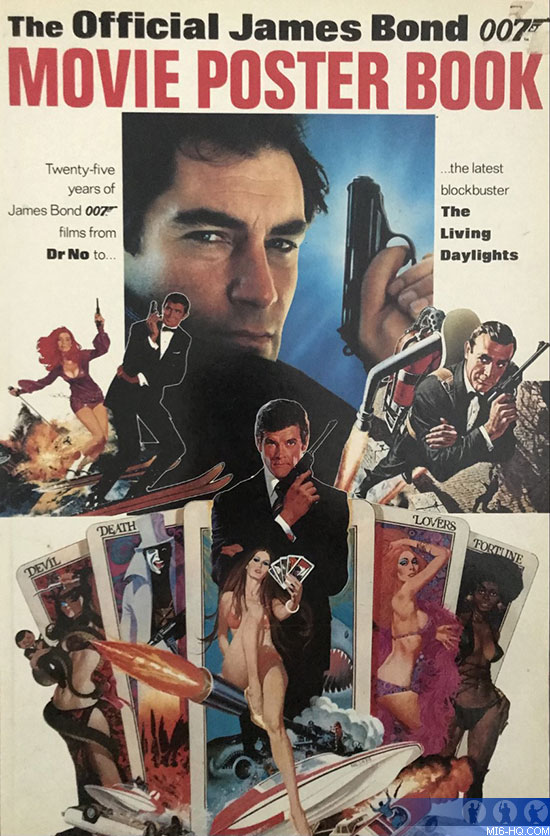
I can remember reading those descriptions Sally – ‘Thunderball’ in particular - imagining in my head how the scenes you detailed would unfold! I had not seen all the films at that time. It was a fantastic, large format book. It seemed huge to a 6 year old!
Well I think it needed to be that format to give the posters prominence. I think it’s a beautiful book. I did a similar book on the Disney posters for Hamlyn.
After the success of both the Movie Book and Poster Book came The Making of Licence To Kill…
I can’t really remember where the idea came from. But for a budding film producer like myself it was basic training in how to make a film. To be able to go around any department and ask questions was fantastic. I have to tell you I am very shy. And the night before I was due to fly to Florida I sat on the floor shaking, in floods of tears with a bottle of wine thinking, “I don’t know if I can do this!” What I got paid by Hamlyn was a pittance. I insisted they put me in the same hotel as the film unit and on the same per diems as the crew. I also said, if the book gets serialised in any newspaper, I want a share. I got £4,000 for it being serialised in the Daily Mirror. Nor a word of it was mine though! It was completely re-written in another language – “Mirrror-ese!” Anyway, off I pootled to Key West and Mexicali and Acapulco in Mexico. I had a great fun.
During your tenure as the official Bond author, Timothy Dalton was the man of the moment, the new James Bond. What are your memories of him?
I spent time with him in Key West on ‘Licence To Kill’. He was very distant. He wasn’t relaxed. We did talk but he really didn’t want to. I’ve seen him on the stage and I think he’s fantastic.
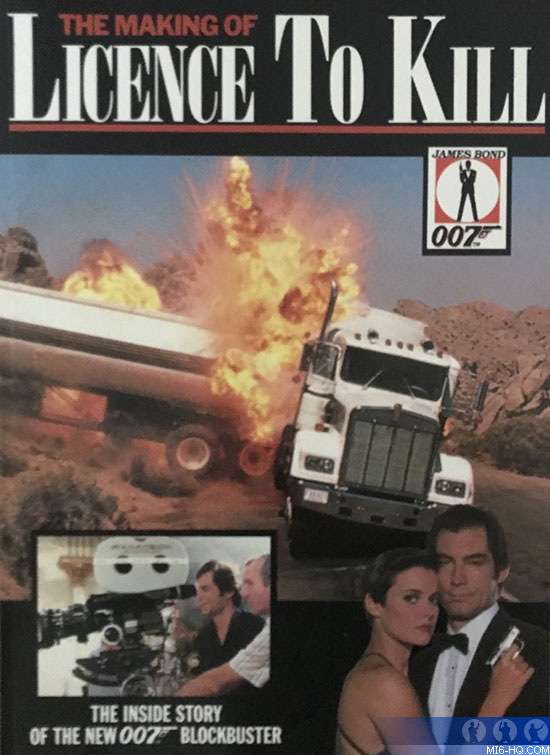
How did you approach The Making of Licence To KiIl?
My book wasn’t about talking to the actors it was about how to make the film and I made that decision early on. I did make friends with Benicio Del Toro, he was a leftie so we got on well! Hair and makeup are interesting to me and they are terribly important to Bond. I focused on this subject in detail. Where would the Bond girls be if you didn’t have terrific hair and make-up? I used to sit in the Jacuzzi in the evening and have a G&T with the hair and make-up girls. At that time I am sure I was the only woman to have written anything about Bond apart from my mother’s scathing reviews!
You said you didn’t meet anyone from the Bond empire during the preparation of the first two books but The Making of Licence To Kill must have been different?
I became part of Jerry Juroe and Saul Cooper’s press department. I met Cubby Broccoli for the first time in Mexico, I didn’t really know what questions to ask him, I was a bit over awed. It wasn’t the best of my interviews! I do remember Cubby told me that when he was still in partnership with Harry Saltzman the producing credit would read Broccoli-Saltzman in the western hemisphere and Saltzman-Broccoli in the Eastern hemisphere.
Barbara Broccoli was earning her producing stripes on ‘Licence To Kill’ and was credited as Associate Producer. As fellow female filmmakers did you spend much time together?
In those days Barbara was very shy and she really didn’t want to be interviewed. But as luck would have it, they were filming the stunt where the plane drops Bond onto the tanker and we got stuck for an hour at the wrong end of the stunt so she had to talk to me because there was nobody else there - just the two us! I did get invited to Cubby’s memorial but unfortunately I was abroad.
How did you split your time across the main and action units?
I didn’t spend much time with the main unit, perhaps two days, because I had to, it was excruciatingly boring and there is nothing to write about. John Glen was fun to talk to though. I fell in love with the second unit and they gradually fell in love with me. I’m not afraid to ask silly questions, I haven’t as a film producer.
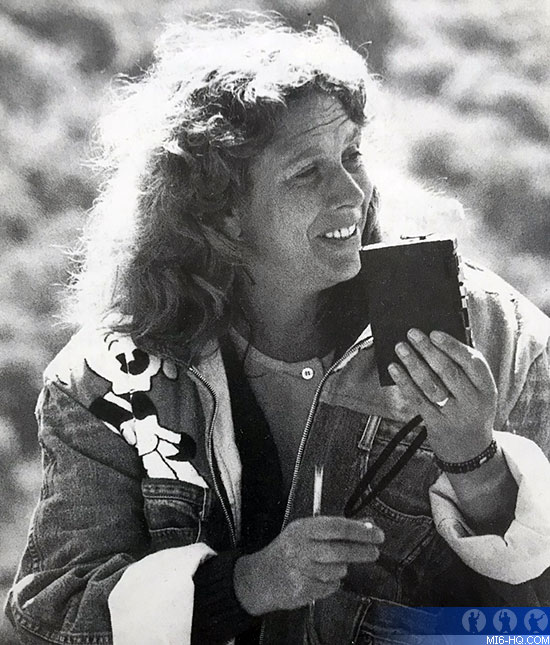
ABOVE: Sally on the set of Licence to Kill (1989).
What attracted you to the second unit so much?
That was where the fun was! Arthur Wooster (second unit director) was great and really welcomed me. I literally spent my time watching things being blown up, planes hovering above tanker trucks, vehicles going over the edge of cliffs. I loved Rémy Julienne who was overseeing the tanker sequence. I remember somebody on the crew said, “He doesn’t really speak English,” and someone else said; “Well, he doesn’t really speak French either!” [Laughs]. Rémy was a great guy. His son was part of his team and he was obsessed with scorpions. He spent his time overturning stones looking for them. I took a trip over to Cuba while we were shooting in Florida. Of course, being a Bond film I got an order from the crew for about 200 cigars. I l also bought a Che Guevara poster back for Benicio Del Toro.
What are your memories of the 1989 update of the Movie Book, which included coverage of Licence To Kill?
I didn’t even know I had done an update! I must have done in my sleep. Sorry about that!
Your closing sentence of The Movie Book refers to The Living Daylights; “This debut could well be a momentous chapter in the history of the Bond series when another book is written one day titled The Official James Bond 007 Movie Book – The Second Twenty-Five Years.” When you wrote that did you think for one minute the Bond movies would still be in production 25 years later?
Yes! Bond is a very durable. And what EON is very clever at doing is moving with the times. They always hit something that is topical.

ABOVE: Sally and Licence To Kill director, John Glen at a Bond reunion.
You will always be a footnote in Bond history. How do you look back on your time with James Bond?
Everyone else who has written about Bond has been blokes. I was the first girl. I remember on the set of ‘Licence To Kill,’ various members of the crew had copies of my Movie Book. People would want three autographs: Cubby’s, Timothy Dalton’s and mine! [Laughs]. I don’t see the Bond films anymore – the last one I saw was ‘Casino Royale’. I haven’t talked about James Bond for ages! I’m really chuffed that there is still interest in my Bond books. I’m proud to have been the first official Bond author but I am very proud of other things, to have become the first female down-table sub on the sports desk at The Sunday Times and I’m proud of my films. I’m even mentioned in Tony Benn’s autobiography too you know!
Special thanks to Ajay Chowdhury, Mark Witherspoon and Brian James Smith.
Stay tuned to MI6-HQ.com for future exclusive interviews in Matthew's 'Bond Bibles' series.
Get Bond in Your Inbox
Sign up for occasional email updates from MI6. Get notified of breaking Bond news, and digests of recently releases features:












